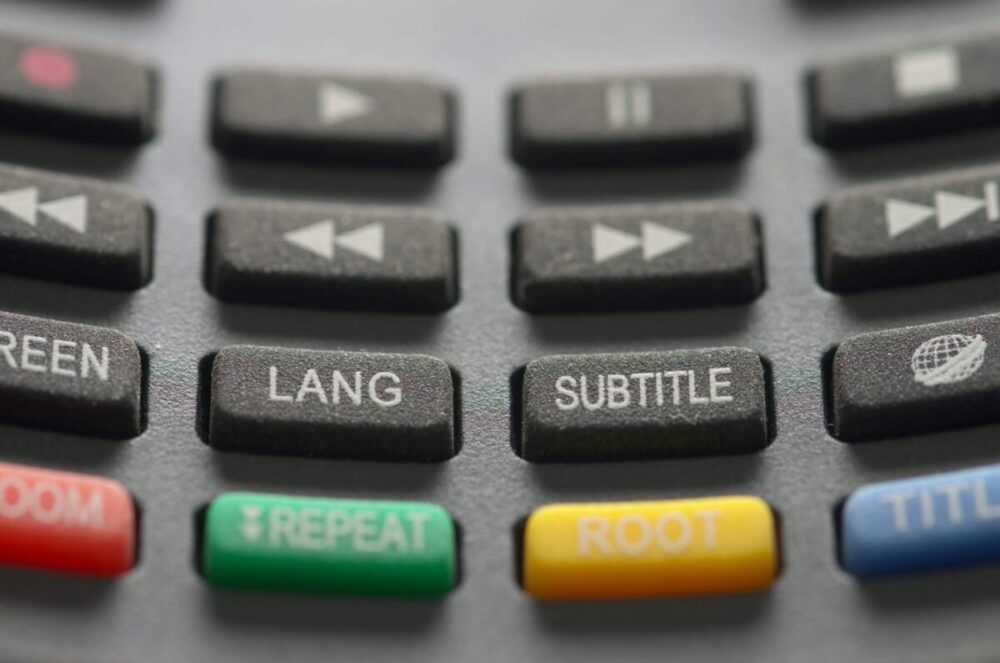According to studies conducted by the National Institute of Health, captioning and subtitling have many benefits: a longer span of attention, better memory of the content, and fantastic learning comprehension for all kinds of audiences, not only for the ESL learners or those having hearing impairments.
Why do you need subtitles for your content?
Subtitling and captioning increase the number of readers. For instance, those who do not like reading but love to watch the television, subtitles, and captions are an excellent way to become more literate while watching your favorite shows.
Subtitles are now an integral part of the content since you never know who is watching you. Perhaps your content is watched by a person who does not understand the language in your videos, or perhaps he has hearing problems or perceives information in the text more easily, but not by ear. There are many, many reasons to add subtitles. The most popular is for a foreign audience. Typically this is used to watch movies and TV shows in the original language.
For example, watching movies in Spanish with subtitles can be very useful when learning a language. You have the opportunity to listen to the speakers’ speech, try to catch the intonation and manner of pronunciation; that is, the way of pronunciation. If something in the dialogue is suddenly incomprehensible, subtitles are an excellent assistant, since you can immediately find out what it is all about.
Besides, this is a good way to learn new vocabulary, because unfamiliar words (if you use Spanish subtitles) can be immediately entered into the dictionary, and later find a translation and memorize them. Yes, and you must admit, no matter how professional the voice acting is, it is always more pleasant and interesting to listen to the actors’ real voice and not dubbing or dubbing otherwise.

By linking the audio and images with the words, people can improve their vocabulary acquisition, listening comprehension and reading speed.
Subtitles can be useful if you are trying to learn another language. In a study, two groups of Japanese students were taught English by showing one group an English audio-visual with no captions. The other group watched the same audio-visual with English captions. The latter group got a higher score on comprehension tests compared to their peers.
Videos that have subtitles and close captions are accessible to all, and thus they also, help the hearing impaired or deaf community comprehend the video. It also makes it easier to boost SEO. If a video has subtitles, search engines can catch keywords from the given subtitles and index the video properly.
Old methods for adding subtitles and why they are no longer relevant
Traditional methods of subtitling and captioning videos required users to manually transcribe each content before synchronizing it with the dialogues to develop subtitles or captions. This manual transcribing method was not only time consuming and tedious. Once the transcription was recorded, it had to be exactly matched correspondingly with the timing of the video.
For subtitles to make sense and be functional, the lines must be noted at the right time in each content, or else, there is a risk of alienating and confusing viewers.

Benefits of using applications
There are multiple merits or benefits of using audio to text converter applications online, such as the Audext. This app is audio to text transcription service used by journalists, call centers, teachers, and online tutors. It is very fast, so you can save your time transcribing your content. Besides saving time and money in the long-run, you can also derive the following benefits from utilizing these new applications:
1. Great way to share information
If you have a reliable audio transcription application, you can easily record, store, and convert your audio to a text file. Once the conversion is complete, you can share the text file with others if you wish to. Transcription applications offer alternative ways to share audio files before transcribing and distribute the final file after transcribing.
2. Knowledge transfer
Transcription applications allow you to follow the class you have missed in college by getting notes of the lecture. Using applications, you can transcribe the audio to text files and then distribute it with your peers, classmates, or colleagues.

3. More viewers
Adding subtitles to your videos become very easy. This will help you to reach your target audience and convert them to potential clients, in the long run.
4. Journalistic applications
Being a journalist, you can make subtitles effortlessly. It transcribes the entire audio file to text file. So, you can find quotes from long interviews from the text files.
5. Benefit students largely
A student can easily and automatically transcribe their audio lectures and convert it to text format. It provides an excellent alternative for every student to capture dictations from lectures and transcribe the audio to texts and share it with others who need it. Previously, it was necessary to record all the lectures, and often students did not have time to take notes simply, now this solution is quite simple and convenient.

How to add subtitles
If you have no experience or are a beginner then, go through the following step-by-step guide on how to transcribe video to text:
- Log in to the dashboard
- Click on “New transcription” or “New upload” Select the video file, drag the file to a new window
- Enter the identity or name of the people speaking on the video
- Click on “Submit” to send the video file to a transcription
- Once the transcription is complete, edit it and create suitable subtitles for the video
- Download your transcription in TXT or DOC file format
- Use an online converter and create subtitle format





